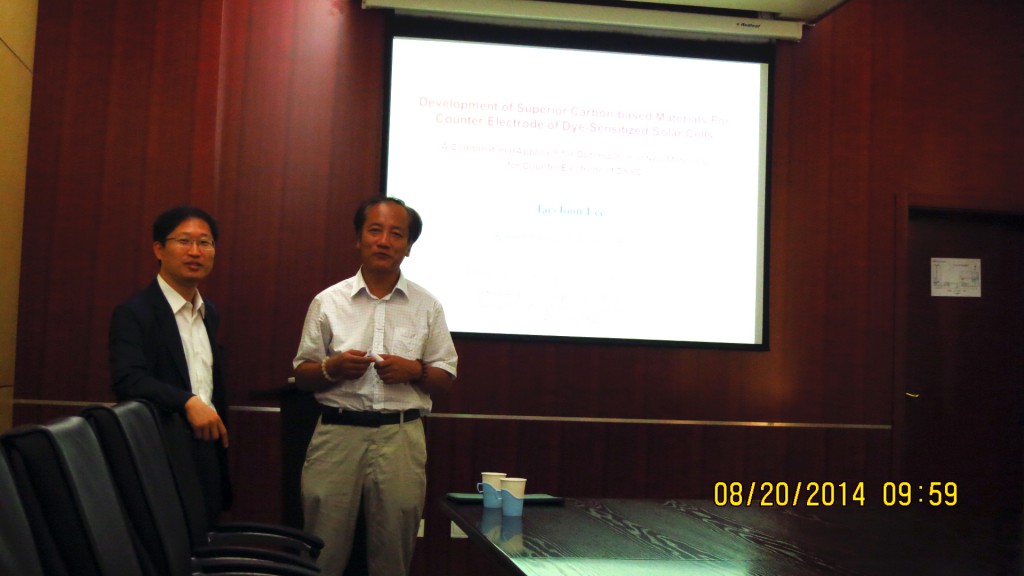Jae-Joon Lee应邀报告--光电化学系列讲座(四十八)
8月20日上午10点,Jae-Joon Lee教授应清洁能源实验室主任孟庆波研究员邀请,在中科院物理所M楼238做了关于Development of Superior Carbon-Based Materials for Counter Electrodes of Dye-Sensitized Solar Cells的精彩报告。

报告人简介:
Professor Jae-Joon Lee received his Ph.D. in Electrochemistry from Case Western Reserve University, Cleveland, Ohio, in 2000. Before joining Department of Applied Chemistry, Konkuk University, Korea, as professor in 2004, he worked at California Institute of Technology, Pasadena, California, as a post doctoral fellow from 2000 to 2004 in the Division of Chemistry and Chemical Engineering. Currently, he is the director of Naotechnology Research Center (Konkuk University) and also serving as the Secretary of General Affairs for the Korean Electrochemical Society (KECS) and the Managing Director of the Korean Society of Organic Solar Cells since 2014.
报告摘要:
Highly efficient counter electrodes (CEs) for dye-sensitized solar cells (DSSCs) were developed by using thin films of scalable and high quality low-dimensional and/or highly mesoporous carbons. It includes a nitrogen-doped graphene nanoplatelets (NGnP), many other edge functionalized graphene nanoplatelts (EFGnPs), and an hierarchical hollow mesoporous carbons (HCMSCs). They were deposited on fluorine-doped SnO2 (FTO)/glass substrates by using electrospray (e-spray) coating, and their electrocatalytic activities were systematically evaluated for Co(bpy)3 3+/2+ redox couple in DSSCs with an organic sensitizer. Most of them exhibited outstanding performances as CEs for DSSCs. They also showed much better electrochemical stability under prolonged cycling potential and its Rct at the interface of the CE/electrolyte decreased down to values much lower than that of the Pt electrode (3.15 Ω cm2). For example, the DSSC with the optimized NGnP-CE had a higher fill factor (FF, 74.2%) and cell efficiency (9.05%), whereas those of the DSSC using Pt-CE were only 70.6 and 8.43%, respectively.
